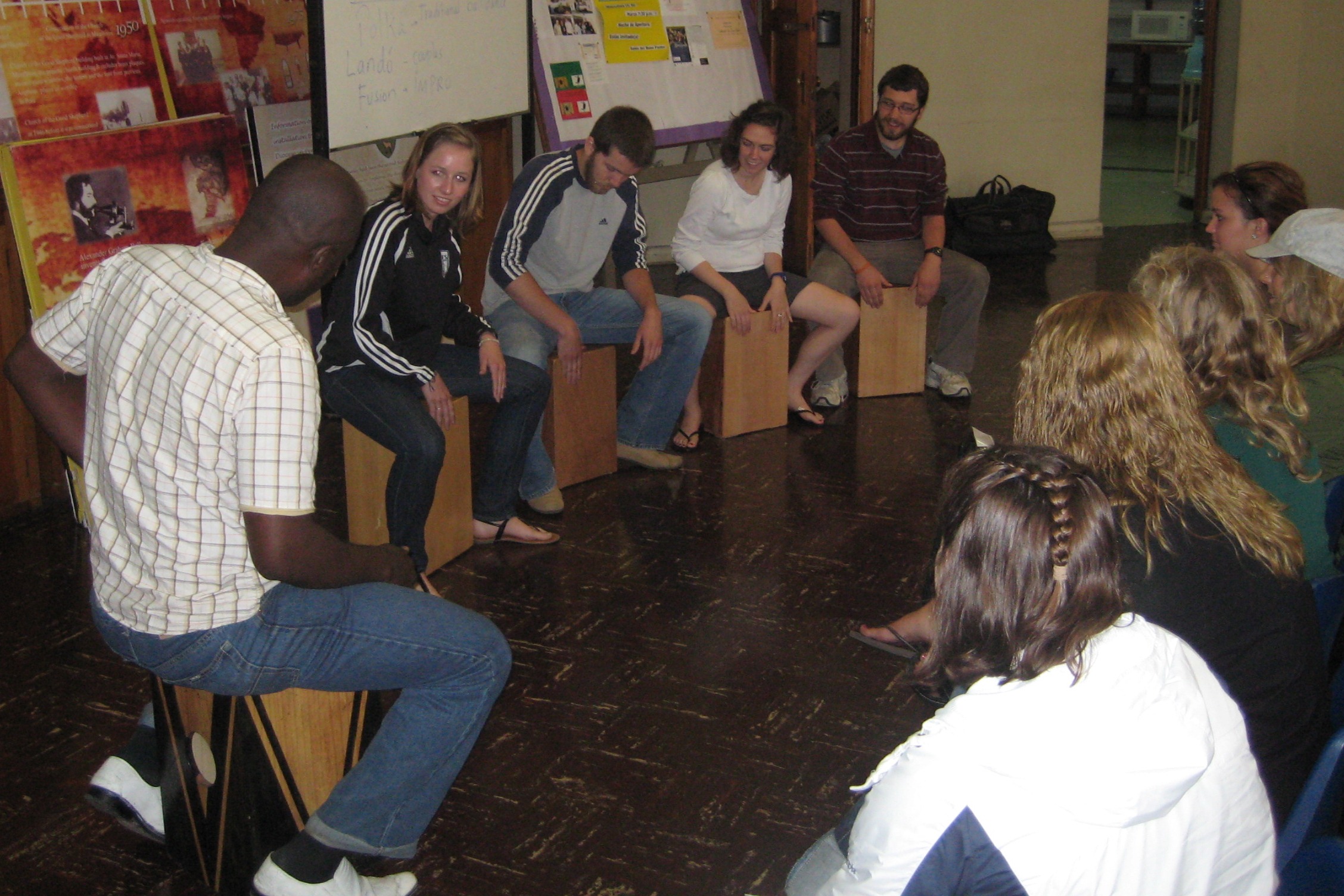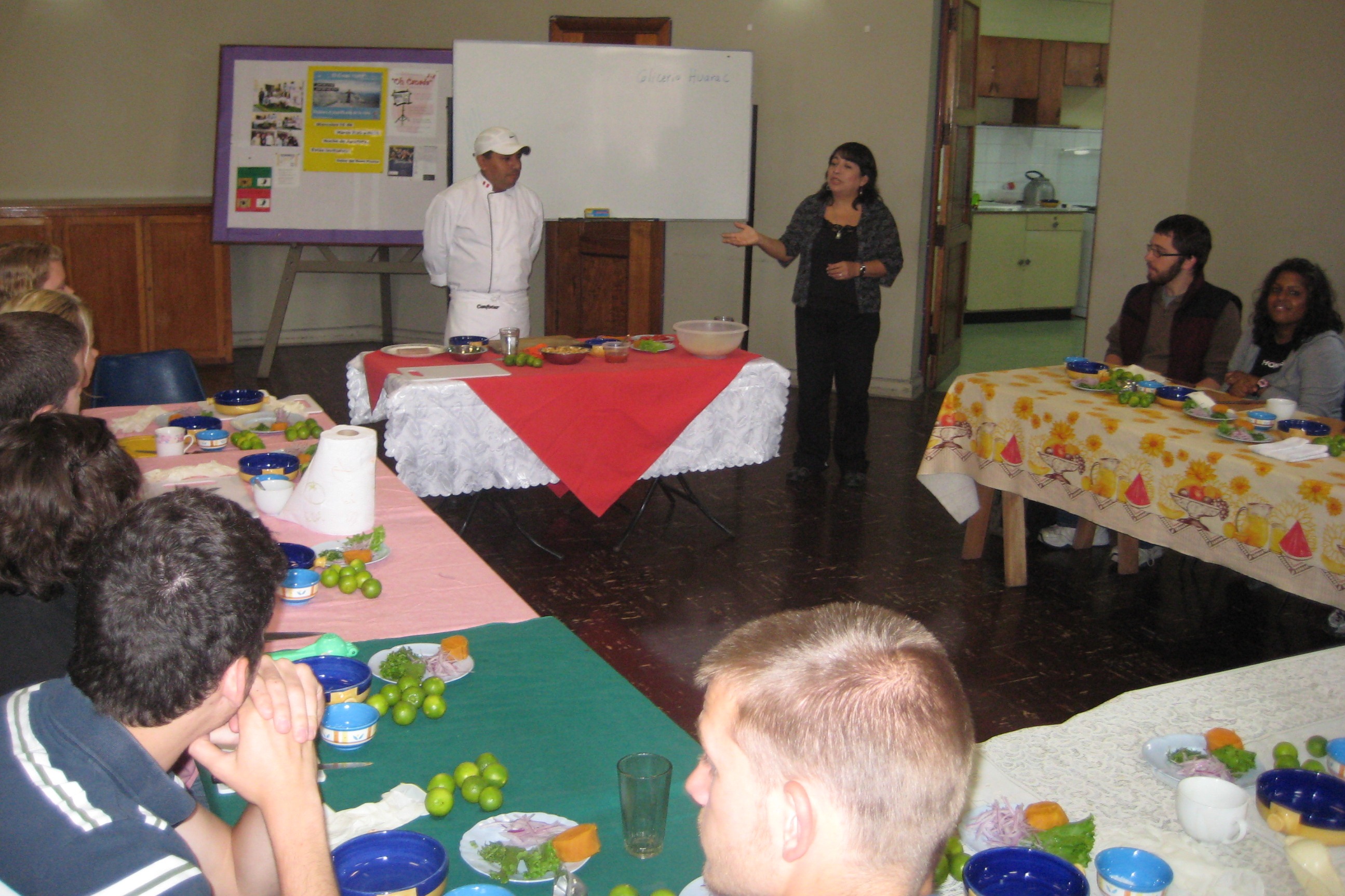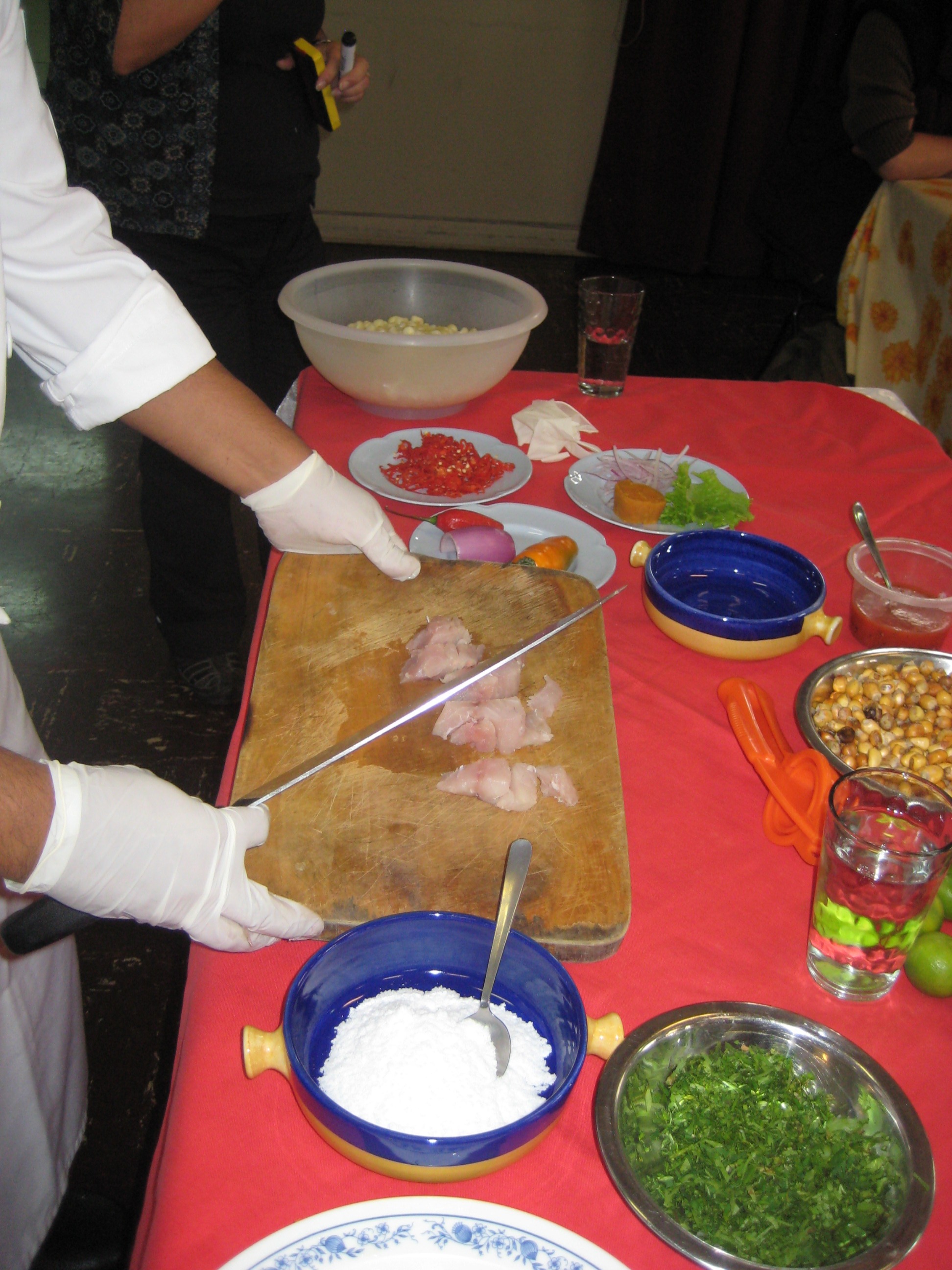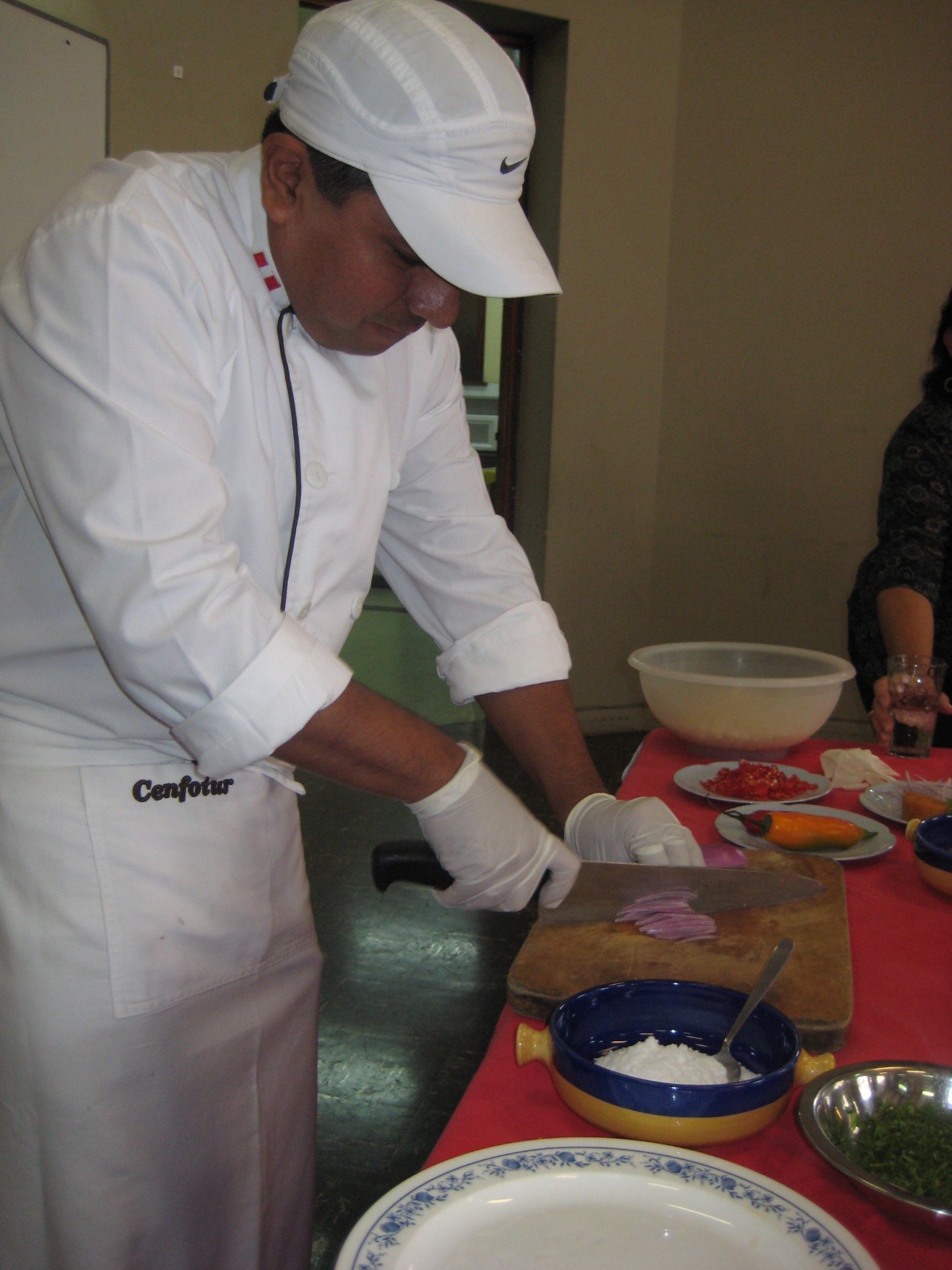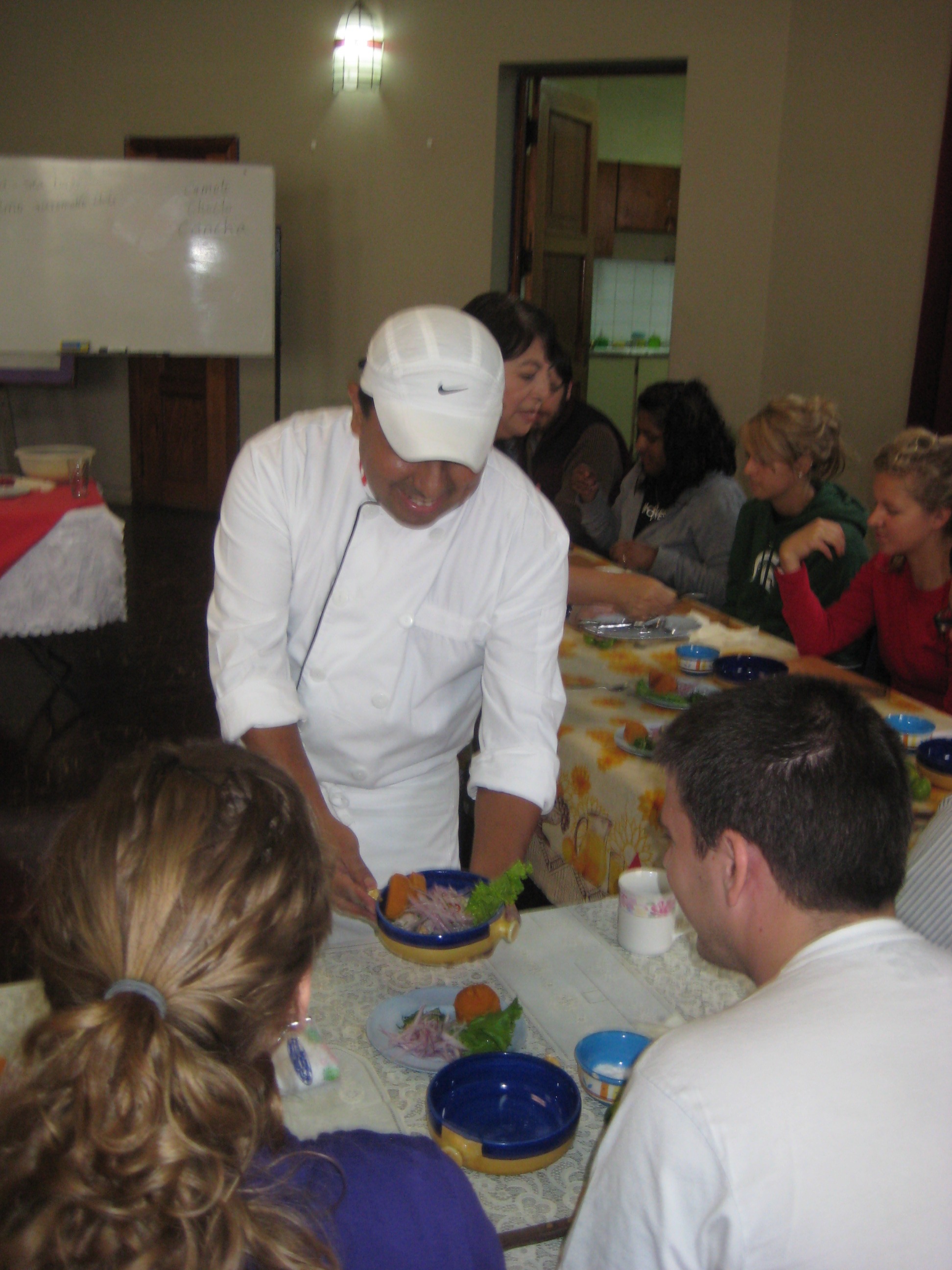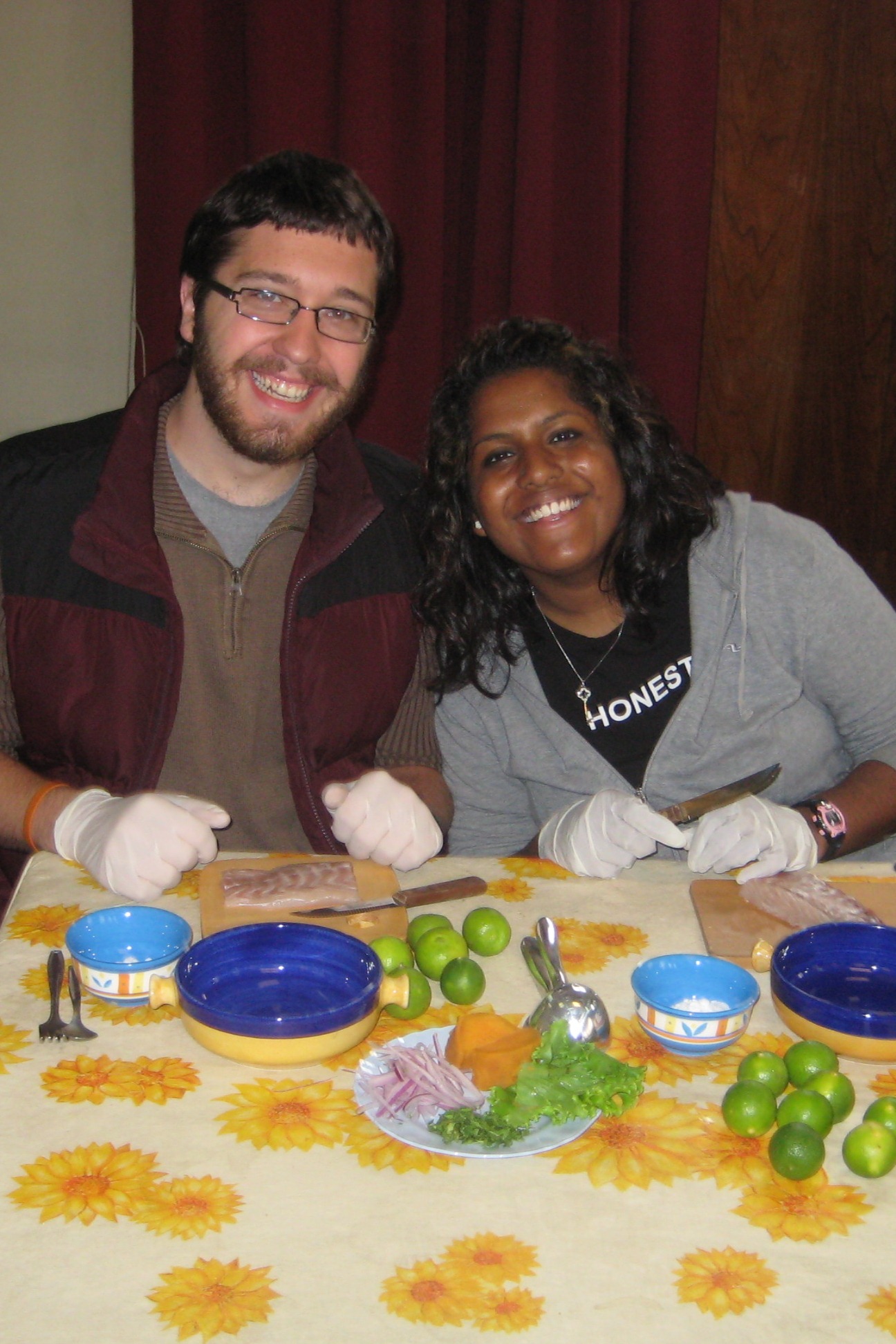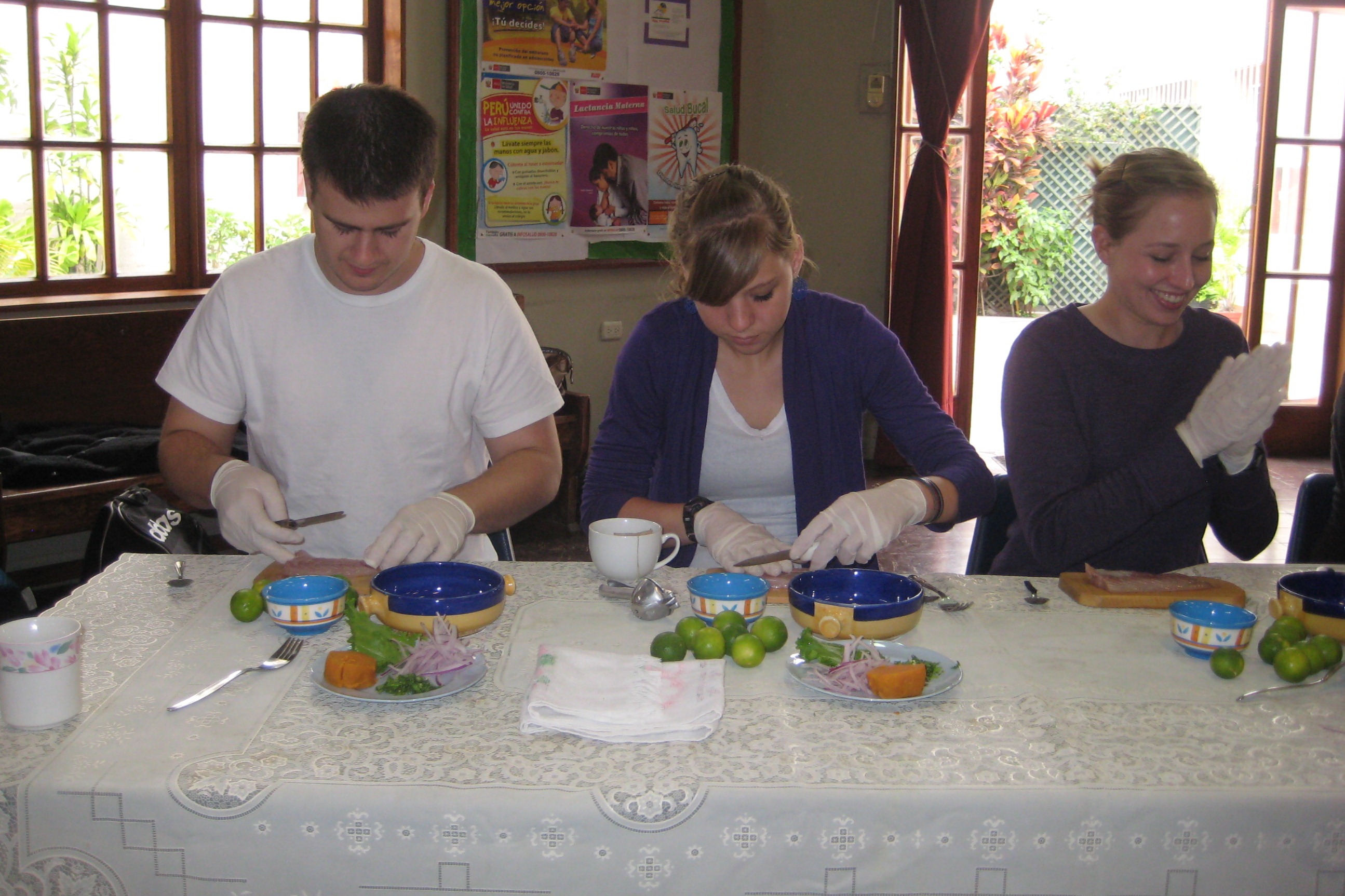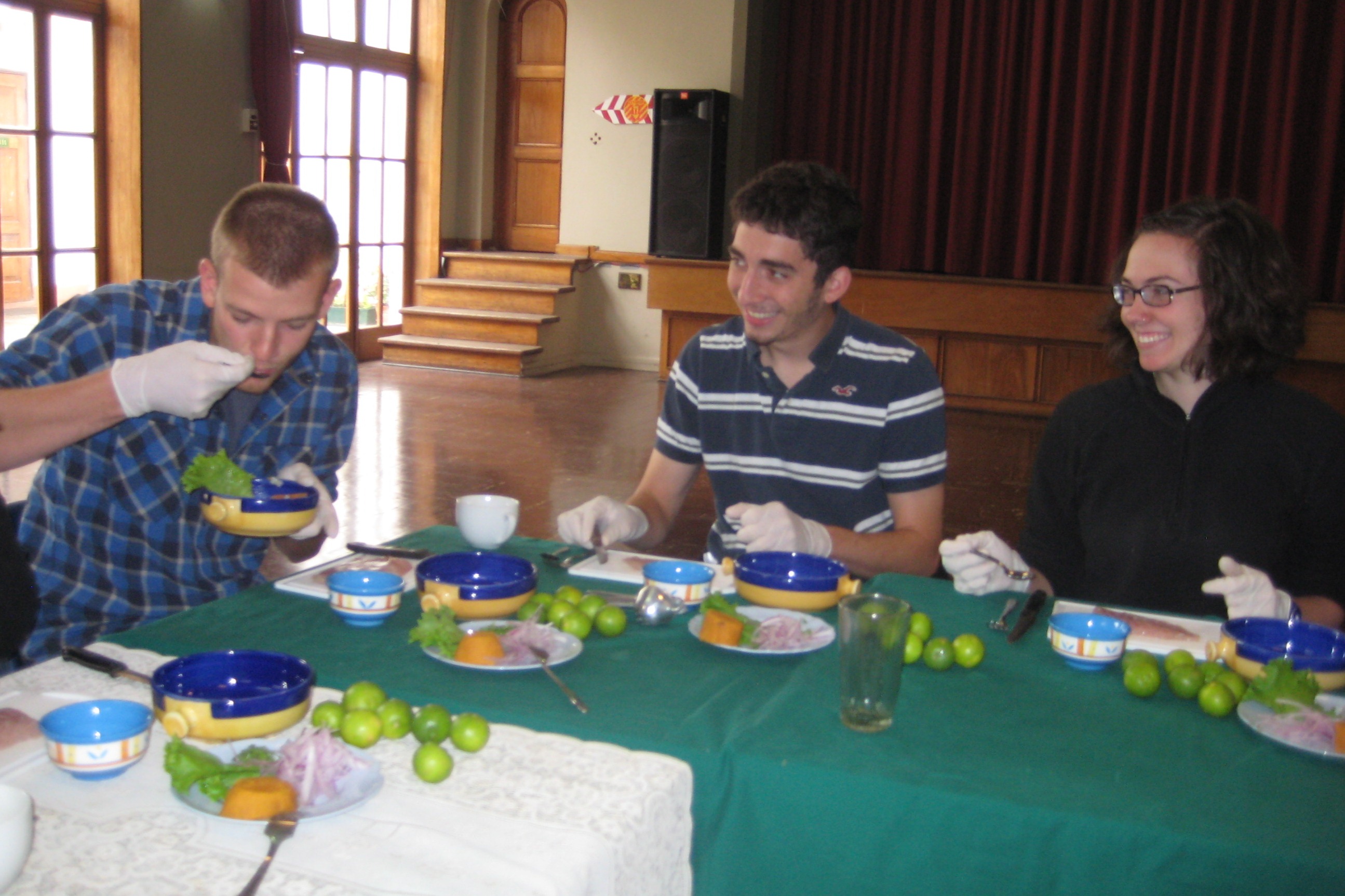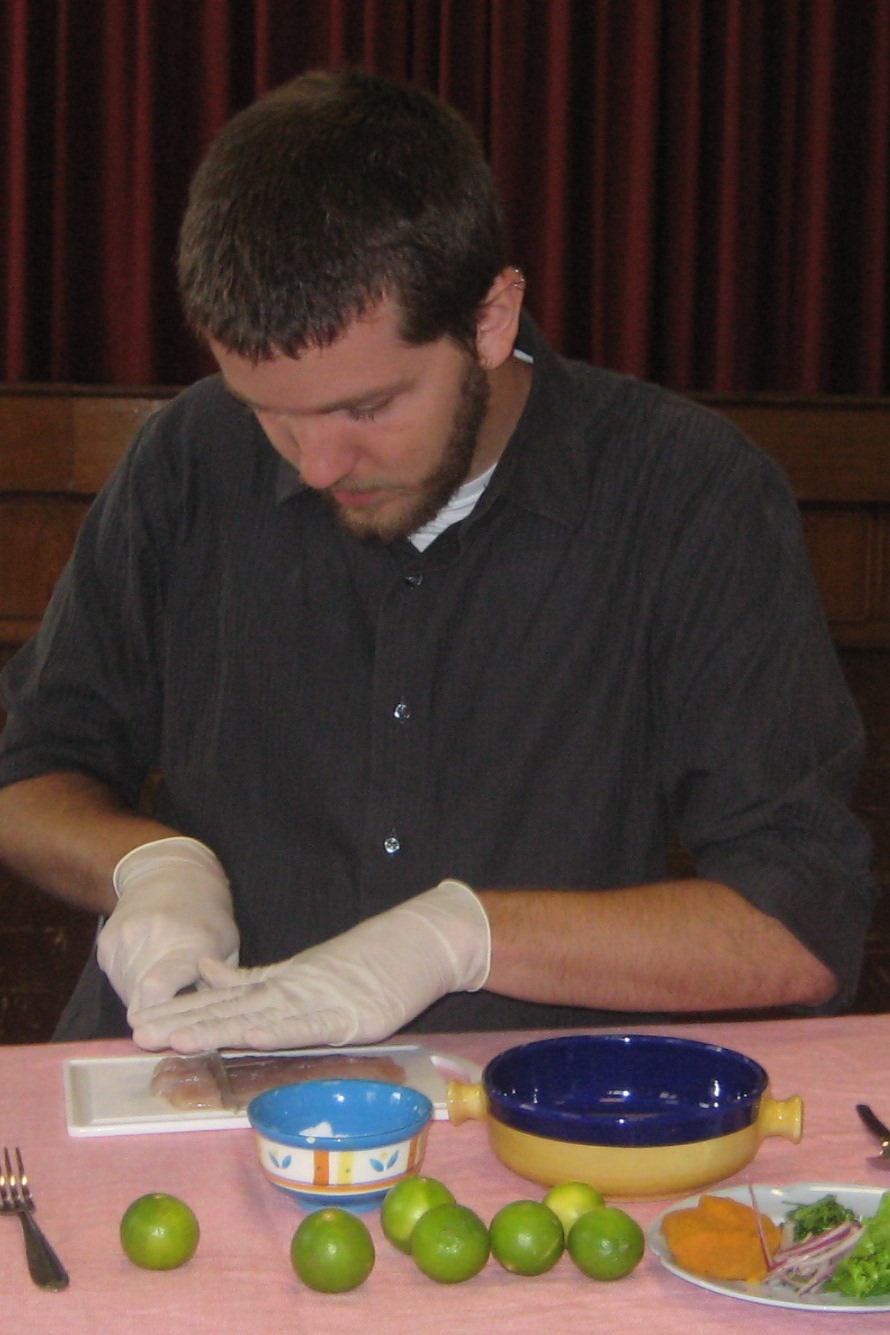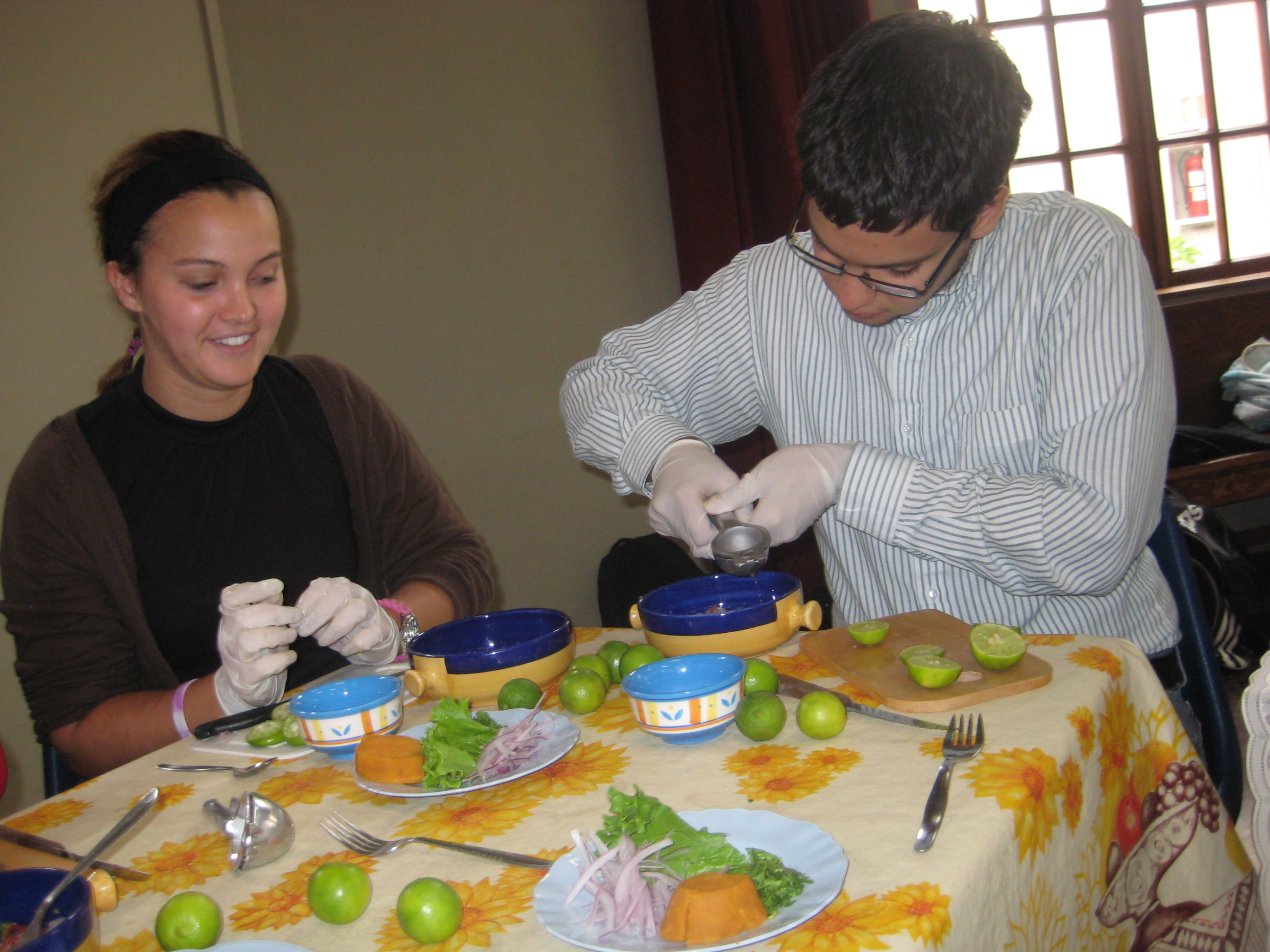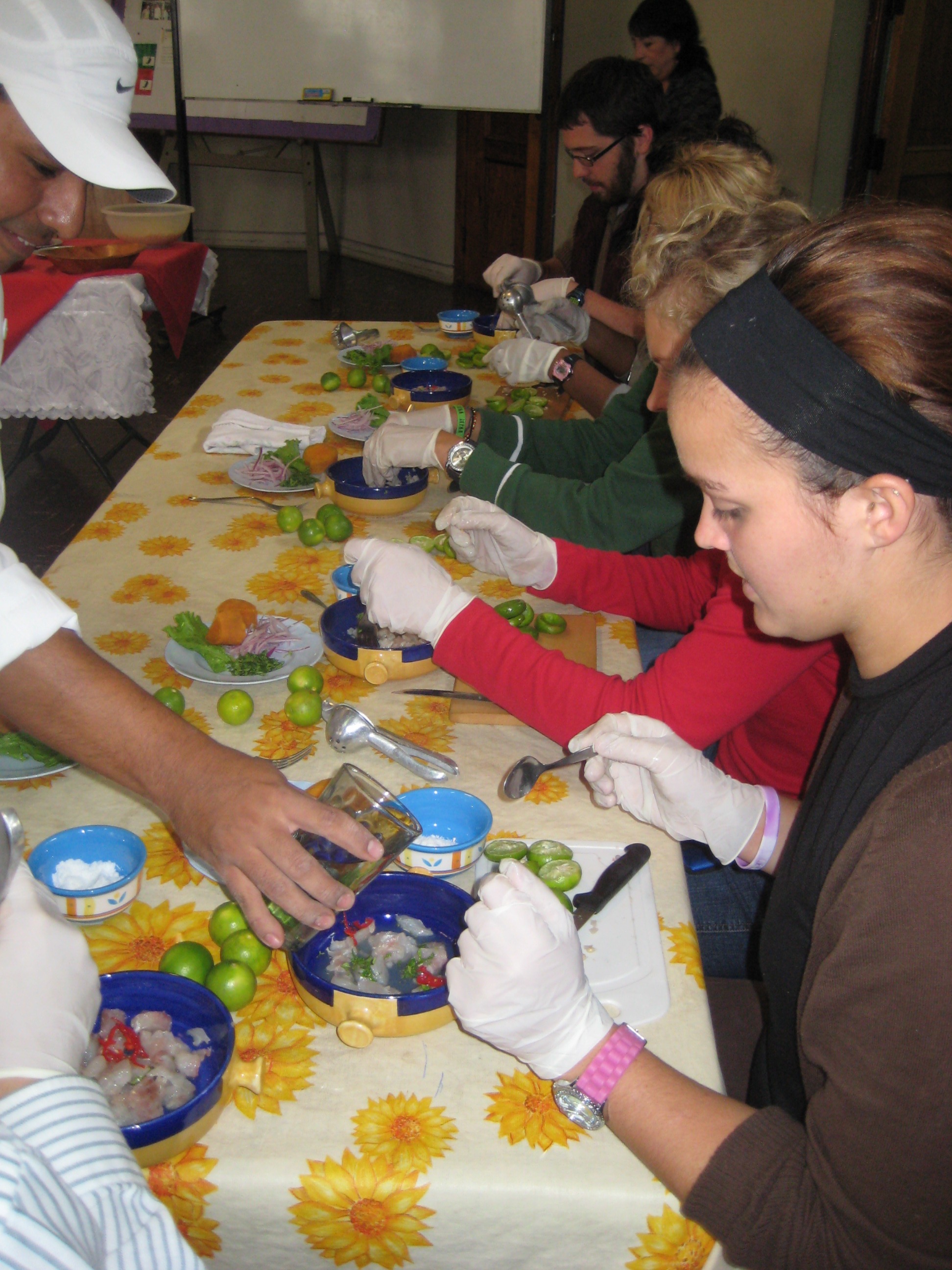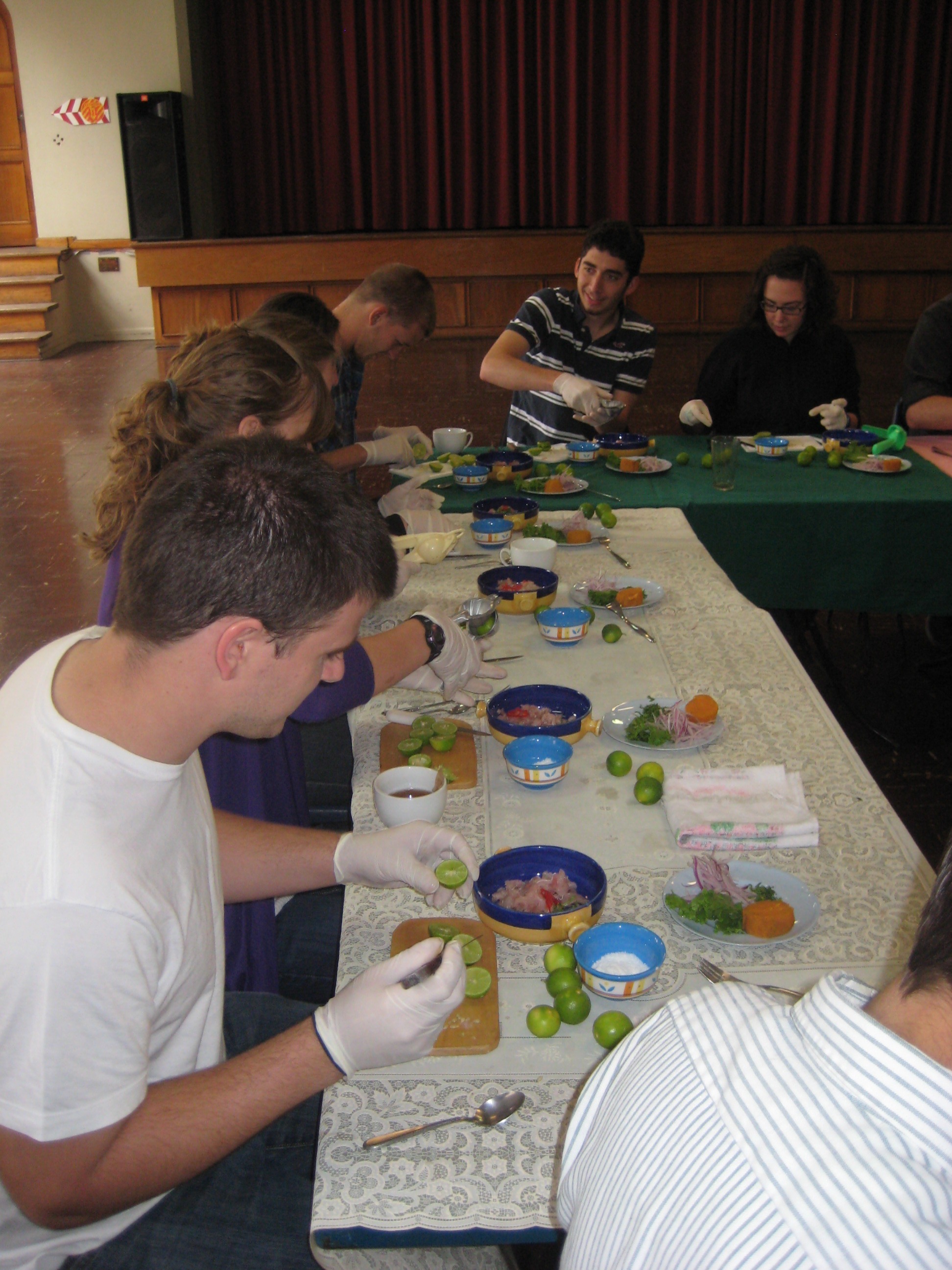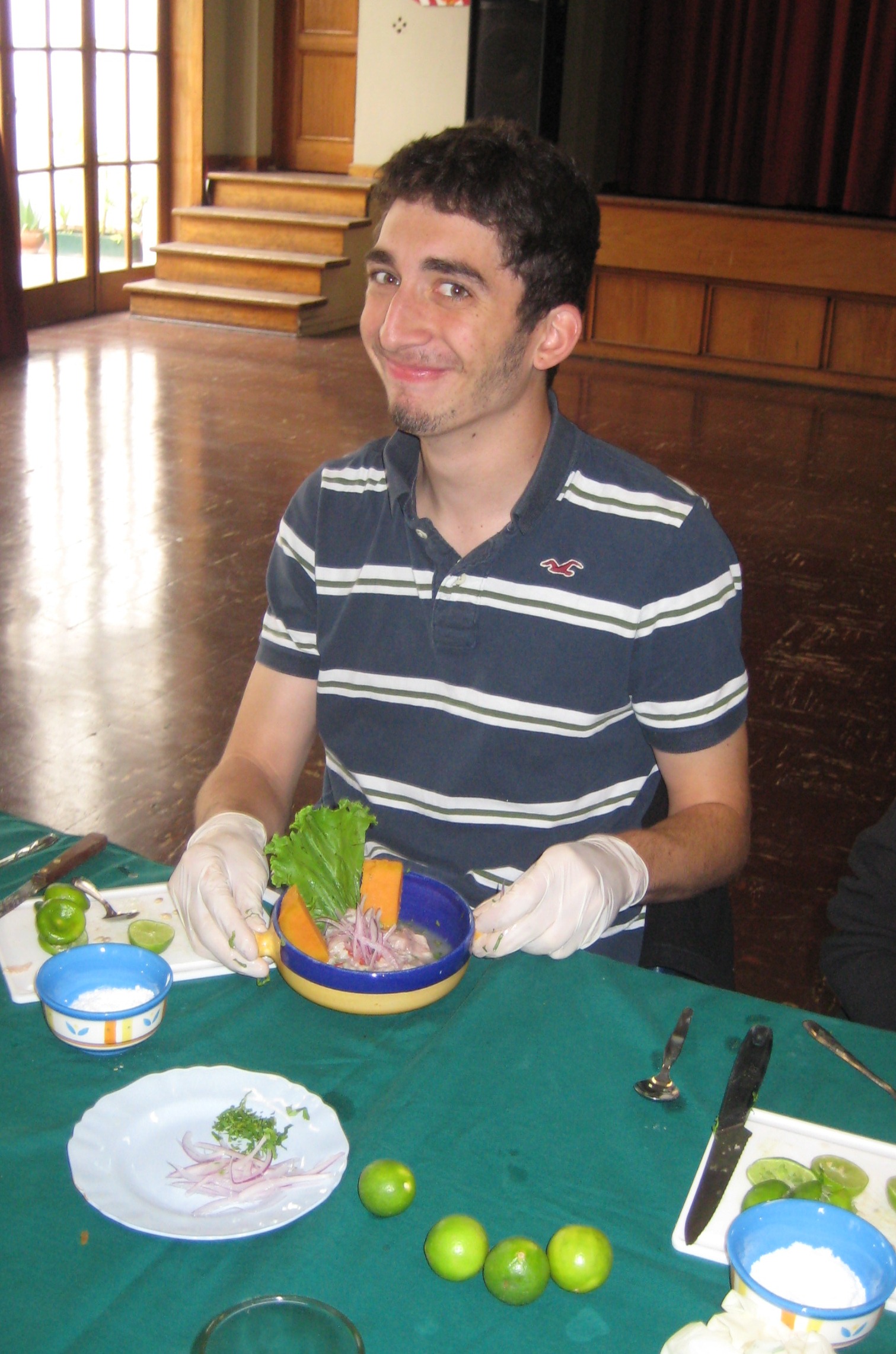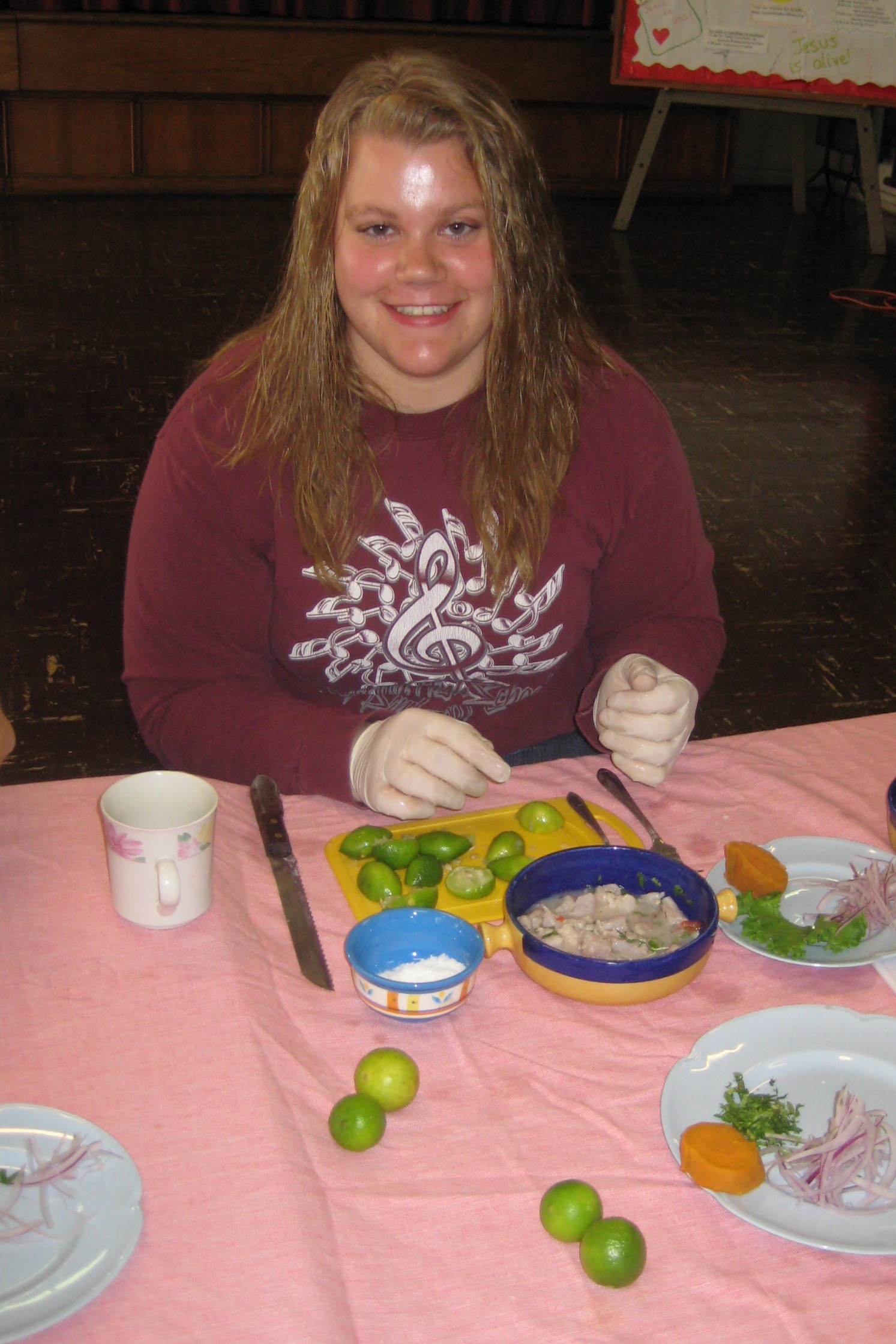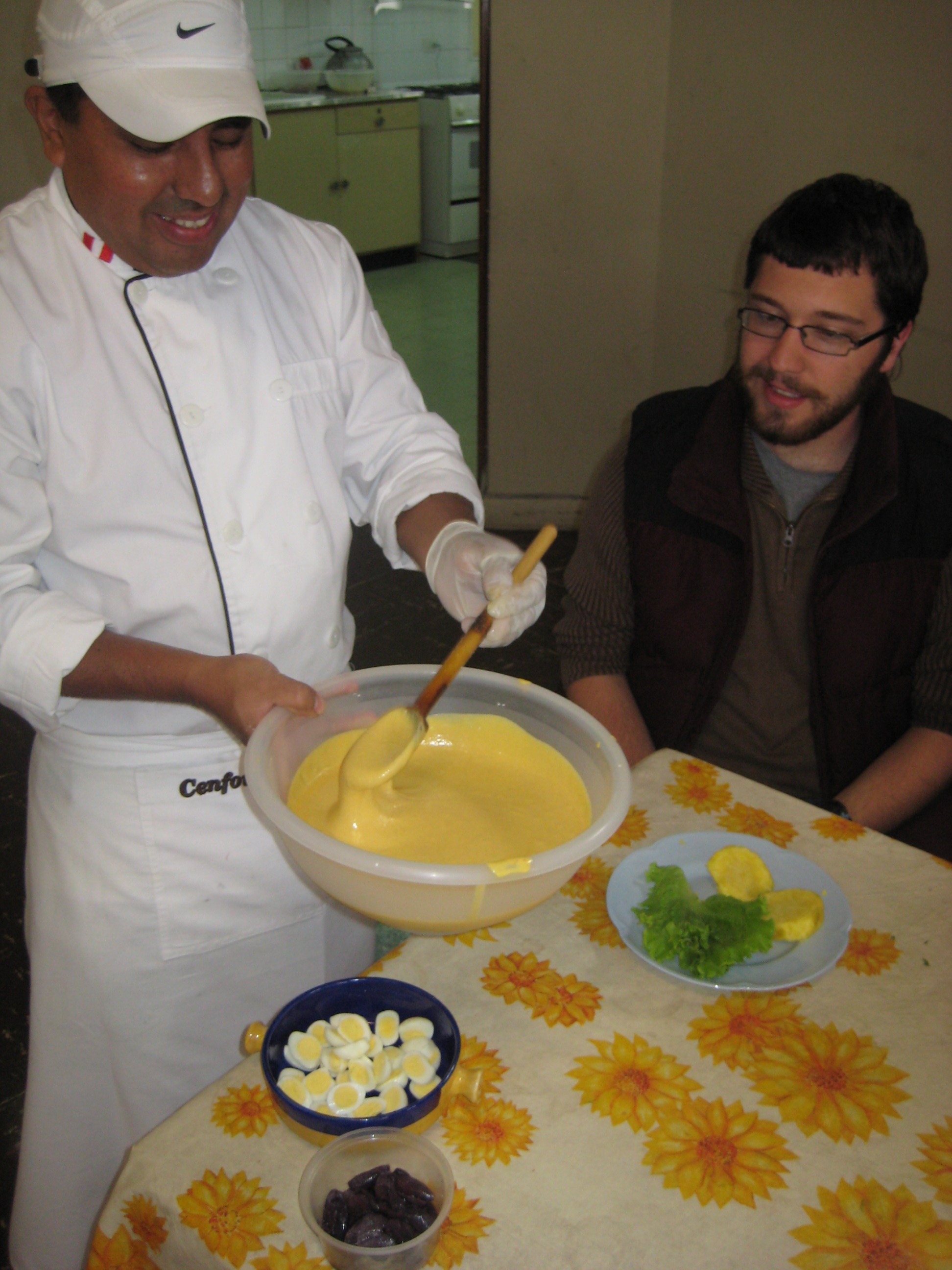hands-on learning
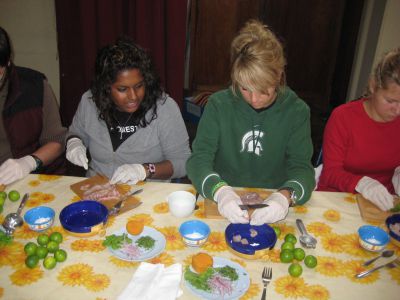
We were able to enjoy two uniquely Peruvian cultural delights this week: the cajón and cebiche.
Drummer extraordinaire Camilo Ballumbrosio introduced us to the cajón during a very loud, hands-on workshop. The cajón, or Peruvian box drum, has its roots in the Afro-Peruvian community and is appreciated by music lovers worldwide (our guest percussionist has played in Europe as well as North and South America). Camilo told us about his family, which hails from the coastal town of Chincha. He and his siblings started learning traditional Afro-Peruvian music and dances when they were young—Camilo was just 4 when he started playing the cajón—and they continue to teach and perform.
After Camilo demonstrated several different rhythms for us—including the vals (Peruvian waltz), marinera (criollo, or a mix of native Peruvian and Spanish colonial), landó (of African origin), festejo (African-Peruvian celebration), and polca (traditional criollo)—everyone took a turn at the cajón.
The next day guest chef Glicerio Huarac taught us how to prepare cebiche, one of Peru’s true culinary masterpieces. The SSTers cooked covina (sea bass) in a marinade made of lime juice, ají peppers, and onion (lime juice alone cooks the fish—no oven needed!), and garnished it with sweet potatoes, corn kernels, and lettuce. He also taught us how to prepare Papas a la Huancaina, boiled potatoes served with a mild cheese and pepper sauce, a hard-boiled quail egg, a black olive, and garnished with lettuce. This dish, a popular entrada (appetizer) from the highlands, is his favorite. The workshop resulted in a terrific lunch!


